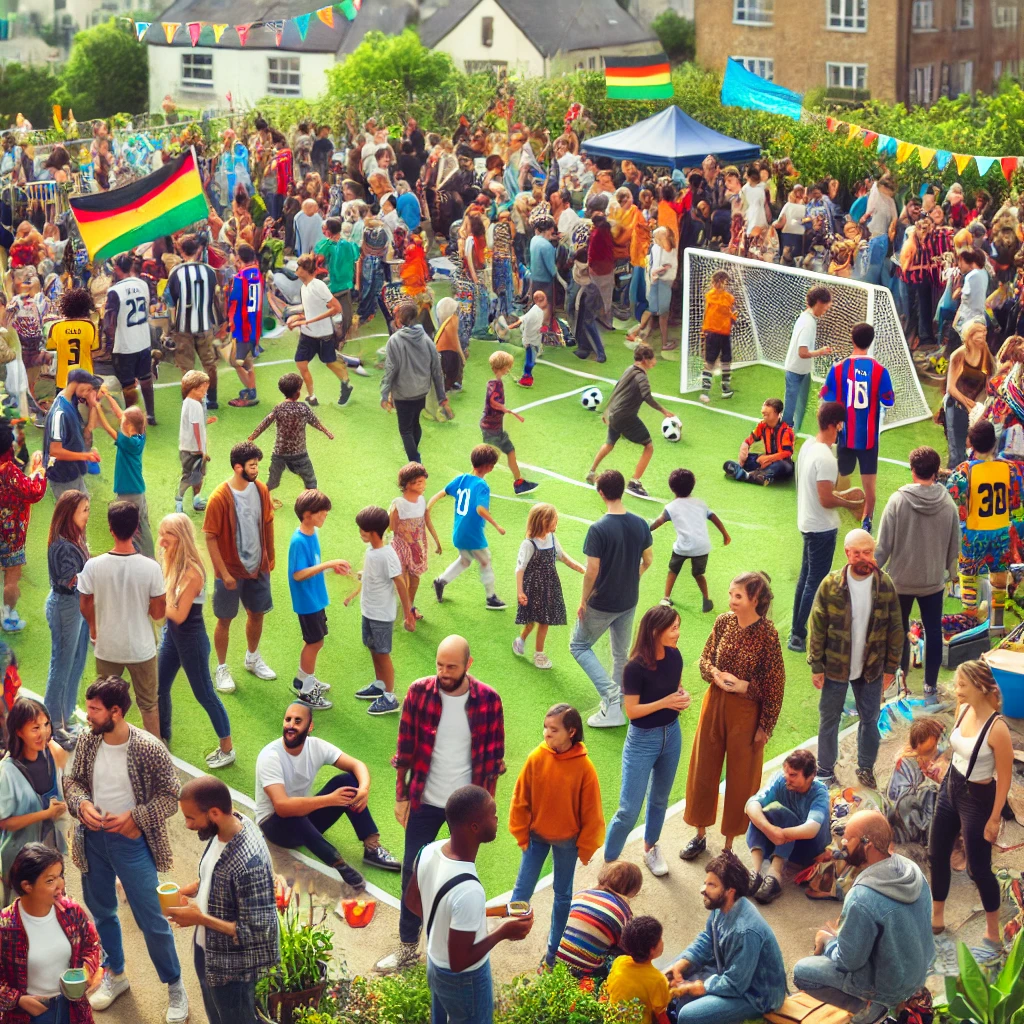Sports have long been recognized as a powerful force for fostering social cohesion and the role of sports in community building is evident as individuals from various backgrounds come together to celebrate a shared passion. This article explores how sports serve as a catalyst for community building, fostering social engagement, promoting health, and creating a sense of belonging.
Uniting Communities: The Role of Sports Across Demographics
One of the most striking aspects of sports is its ability to transcend social, cultural, and economic differences. Whether at a neighborhood pick-up game or a major sporting event, people from all walks of life gather to cheer for the same team or participate on the same playing field. This shared experience builds camaraderie, sparks friendships, and fosters mutual respect among diverse groups.
Community Sports Leagues: A Meeting Ground
Community-based sports leagues, such as youth soccer teams and adult recreational basketball leagues, illustrate the role of sports in community building by creating spaces where individuals can meet, interact, and collaborate, effectively breaking down social barriers. For instance, a youth soccer team may comprise players from various cultural backgrounds, teaching them teamwork and cooperation while also introducing them to different perspectives. These interactions not only foster friendships among players but also among their families, who often gather to support their children.
Moreover, professional sports teams often serve as a rallying point for cities and regions, giving citizens a collective identity and sense of pride. Fans from different demographics come together in stadiums, wearing their team colors and celebrating victories, creating an inclusive atmosphere that celebrates diversity. This collective experience can have a lasting impact on community identity, as shared victories and defeats can bring people together, instilling a sense of belonging and mutual support.
Fostering Social Engagement and Volunteerism
Local sporting events, whether organized or informal, often require significant community involvement to thrive. From coaching to organizing events, volunteers play a crucial role in making these activities successful. This type of engagement not only brings people together but also helps build a sense of ownership and shared responsibility within the community. If you have experiences or insights on sports in your community, we invite you to share your story with us at Write for Us Sports!
The Power of Volunteering
When community members volunteer their time and skills, they create strong bonds with one another. Coaches, referees, and organizers become role models and mentors, impacting the lives of participants far beyond the field. Moreover, the act of volunteering fosters a sense of pride and accomplishment, motivating others to get involved.
Sports-based charity events, such as marathons or charity football matches, further encourage community members to contribute to a cause, blending physical activity with philanthropy. These events provide an avenue for individuals to give back to their communities while also promoting health and fitness. By participating in these charitable endeavors, community members can see the tangible impact of their contributions, reinforcing a culture of generosity and support.
Promoting Health and Well-being: The Role of Sports in Communities
Beyond its social benefits, the role of sports in community building also plays a vital role in promoting physical health and mental well-being within communities. Community sports leagues encourage active lifestyles, combating issues like obesity and sedentary behavior, which are prevalent in many societies today. Passionate about health? Share your tips and experiences with our community at Write for us Health!
The Importance of Physical Activity
Regular participation in sports helps individuals develop healthier habits, ultimately leading to improved physical fitness. Children who engage in sports are more likely to maintain an active lifestyle into adulthood, reducing the risk of chronic diseases such as diabetes and heart disease.
Additionally, the mental health benefits of sports are well-documented. Engaging in physical activity can lead to stress reduction, improved mood, and enhanced mental clarity. The camaraderie found in team sports can combat feelings of loneliness and isolation, promoting a healthier community overall. The shared experience of competing and celebrating successes together fosters a sense of belonging and emotional support.
Strengthening Community Resilience Through Sports
In times of crisis, sports can also play a crucial role in helping communities bounce back. For example, when natural disasters strike, local sports organizations often become central hubs for recovery efforts. They can provide shelter, food distribution, and a sense of normalcy in chaotic times. By rallying around sports, community members can regain their sense of identity and purpose as they work together to rebuild.
Conclusion: The Lasting Impact of Sports on Community Building
The role of sports in community building is multifaceted and impactful. By uniting people across demographics, fostering social engagement, promoting health and well-being, and strengthening community resilience, sports serve as a powerful tool for enhancing social cohesion. As communities continue to evolve, the significance of the role of sports in bringing people together and fostering meaningful connections will remain vital.
Encouraging participation in local sports can lead to healthier, happier, and more connected communities. Whether through volunteering, joining a league, or simply cheering on a local team, everyone can play a part in harnessing the unifying power of sports. In doing so, we can create spaces where individuals feel valued, supported, and connected, ultimately enriching the fabric of our communities.




